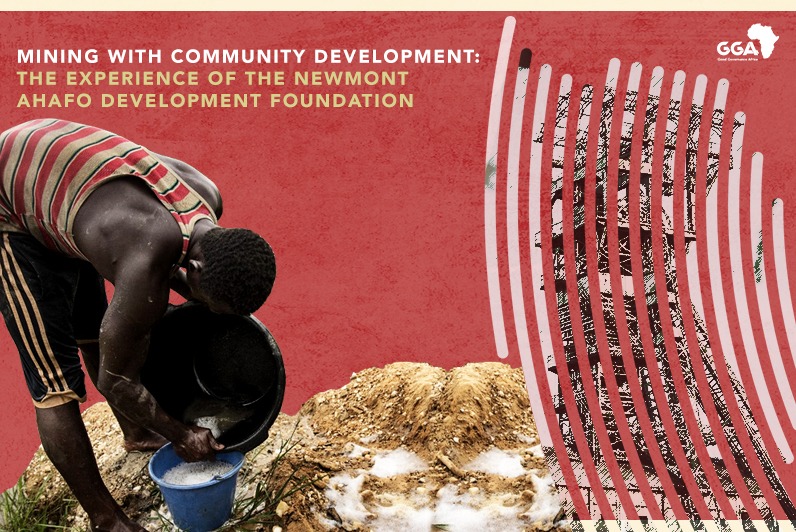
Development is fraught with several “backs-and-forth”, leaving us with no universally accepted way to realise development aspirations. Scholar Jean-Pierre Olivier de-Sardan contends that development professionals situate development practice within two paradigms: “Development seeks the welfare of others, hence its strong moral connotation; and development implies technical and economic progress, hence its strong evolutionist and technicist connotation”. Olivier de-Sadan’s position resonates with the approaches employed by development actors in the international development space. Instructively, his notion of development as “actions for change” in a given system has wide applicability. These actions can be initiated either by various actors alone, or in collaboration with others. An important case in point is the Newmont Ahafo Development Foundation (NADeF), exemplary of actions by a private mining entity with the active support of local actors for change in the Ahafo mine area of Ghana.
Mining, contrary to development, is typically perceived as destructive; an extraction of communal resources for corporate and individual benefits. Development experts Bebbington et al describe mining as ambiguous and contentious. It is ambiguous because of the latent optimism among the general public that perhaps mining could contribute more than it does. It is contentious because it leads to adverse environmental, social and economic impacts for the many and significant gains for a few. Bebbington et al conclude that: “in the coexistence of such divergent feelings about mining and its human and environmental impacts lie the seeds of much conflict”.
Mining, contrary to development, is typically perceived as destructive; an extraction of communal resources for corporate and individual benefits.
Development is so piously construed, and mining perceived to be so deleterious that it is almost impossible to reconcile the two. The NADeF case suggests, however, that mining can be undertaken with the community to attain goals that are mutually beneficial and sustainable. Through the NADeF case study, this briefing challenges the notion that mining is destructive; and describes a successful case of the application of “mining-with-communities” as best practice on the global discourse on sustainable mining.
NADeF’s approach to sustainable development in “mine-take” communities
NADeF was a commitment by the then Chief Executive Officer (CEO) of Newmont Mining Corporation, Wayne W. Murdy. During a visit to Ghana, he made a public commitment to contribute $1 per ounce of gold sold and 1% of net pre-tax annual profit from its mining operation in Ahafo for the sustainable development of the mine area. This commitment culminated in the formation of the Ahafo Social Responsibility Forum (ASRF). The ASRF was composed of 53 members, drawn from representative groups. The ASRF processes were led by an independent moderator and a co-moderator for over two years, resulting in 3 main agreements:
- Relationship Agreement: strengthens the relationship between Newmont Ghana Gold Limited (NGGL), the Ghanaian subsidiary of Newmont Mining Corporation and the Community
- Employment Agreement: spells out modalities governing the employment of locals by NGGL; and
- Foundation Agreement: focuses on the funding and implementation of sustainable development projects within the communities.
The NADeF was subsequently incorporated as a trust limited by guarantee with a nine-member Board of Trustees. Since then NADeF has ensured shared value between corporate Newmont and the mine-take communities. The Ahafo operations of NGGL are located in ten communities in the Ahafo Region of Ghana. The Communities were all supported by NGGL’s community development unit and the NADeF secretariat to establish Sustainable Development Committees (SDCs). Each committee was composed of two representatives from the traditional council, a representative of the youth, one representative of the unit committees, a representative of women and one person nominated by the Traditional Authority but who is not a member of the traditional authority in question.
This commitment culminated in the formation of the Ahafo Social Responsibility Forum (ASRF). The ASRF was composed of 53 members, drawn from representative groups.
The SDCs prepare project proposals on an annual basis for onward submission to the NADeF secretariat for approval and implementation. As a result, the members of the SDCs have been taken through capacity building programmes on defining and identifying community problems and needs; prioritizing community needs; resource mobilization; identification of potential projects, opportunities, constraints and challenges; visioning; objectives and target setting; and project implementation (NADeF, 2009).
NADeF’s success stories and challenges
The NADeF has proved to be a success. It generates about $4million annually to support the development of the “mine-take” communities. Beyond financial commitments, NADeF has set-up SDCs to initiate and manage local development concerns. The capacities of these committee members have been enhanced to enable them take up higher community development responsibilities when the mine finally closes.
NADeF currently invests 15% of its annual income into high interest yielding financial instruments to be used for community development interventions in the future, when NGGL exits. This is expected to rise to 25% five years into the operations of NADeF. While the development concerns of the present are being addressed, measures are also in place to address the needs of future generations.
The NADeF has proved to be a success. It generates about $4million annually to support the development of the “mine-take” communities.
On the physical development front, NADeF has in the past few years invested over $9,236,070.39 on various projects in the communities. These range from schools through to teachers’ quarters, libraries, water systems, electricity/power projects, health facilities, community festivals and other socio-cultural activities.
Notwithstanding the successes outlined above, remaining challenges need to be addressed. There are instances where people who are gainfully employed have been granted NADeF scholarships, when indeed they are not, by any objective criteria, financially needy. There is also increasing reliance of communities on NADeF for almost everything. Communities which were initially self-mobilising now rely entirely on NADeF and NGGL to meet their development needs. This level of dependence needs to be reversed as an integral part of NADeF’s strategy going forward.
NADeF has in the past few years invested over $9,236,070.39 on various projects in the communities.
The relative success of NADeF initiative has attracted the attention of industry actors and other stakeholders. In the past few years, the Foundation has been visited by high profile personalities such as the US ambassador to Ghana, and Jennifer Barsky of the International Finance Corporation. These visits were in recognition of the outstanding role the Foundation is playing in the development of host communities. The Foundation has also been invited to present details of its approach at high level conferences, to help improve best practices within the mining industry. Key among these were the Foundation’s participation in the Pan African grant-makers assembly in Kenya in 2010; and the African Community Foundations Peer Learning and Exchange, also in Kenya in 2010.
NADeF is on the right track towards achieving sustainable development for the “mine-take” communities in the Ahafo area. However, the emerging challenges need to be seriously addressed so that NADeF’s activities can be generationally and sustainably beneficial well beyond the life of any given mine.
Dr David Anaafo is an urban/regional planner, a senior lecturer and the Head of the Department of Planning and Sustainability of the University of Energy and Natural Resources, in Sunyani, Ghana. He holds a BSc in Planning from the Kwame Nkrumah University of Science and Technology (KNUST), a MSc in Development Planning and Management from TU (1) Dortmund/KNUST and PhD in Regional Development from the University of Tasmania in 2015. With research interests in sustainable and pro-poor land policy, decentralisation and local governance, among other topics, David has a wealth of knowledge and expertise to bring to our conversation.


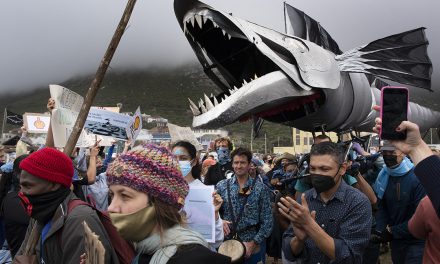

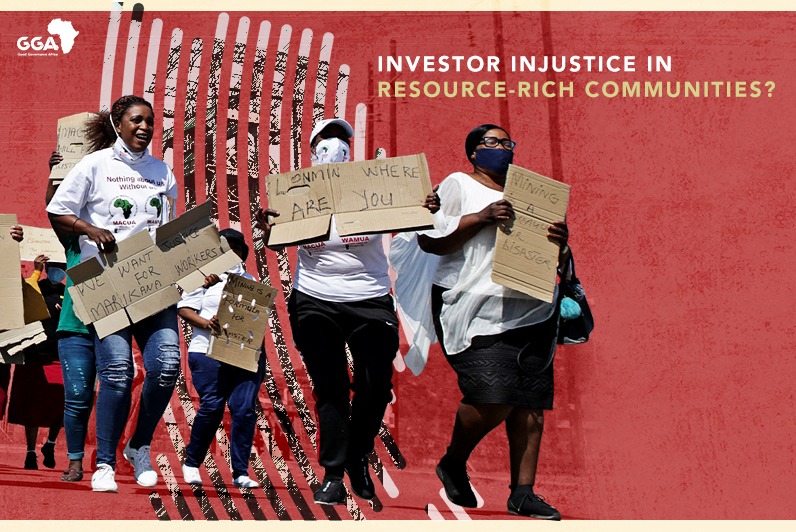
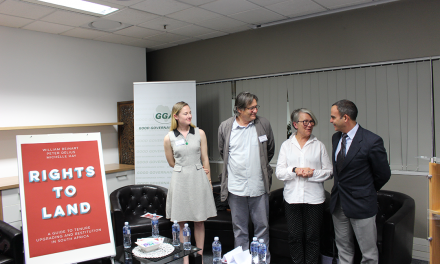




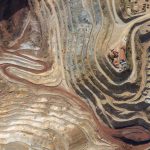


A beautiful piece. Hope other corporate mining organizations will learn from the NADeF experience and contribute to a change in the perception that mining is or can only be destructive. Kudos
Great! NADeF’s story well told.
This explains why NADeF’s initiative was adjudged ” the best Social Impact investment Vehicle “by the European Union in the year 2014